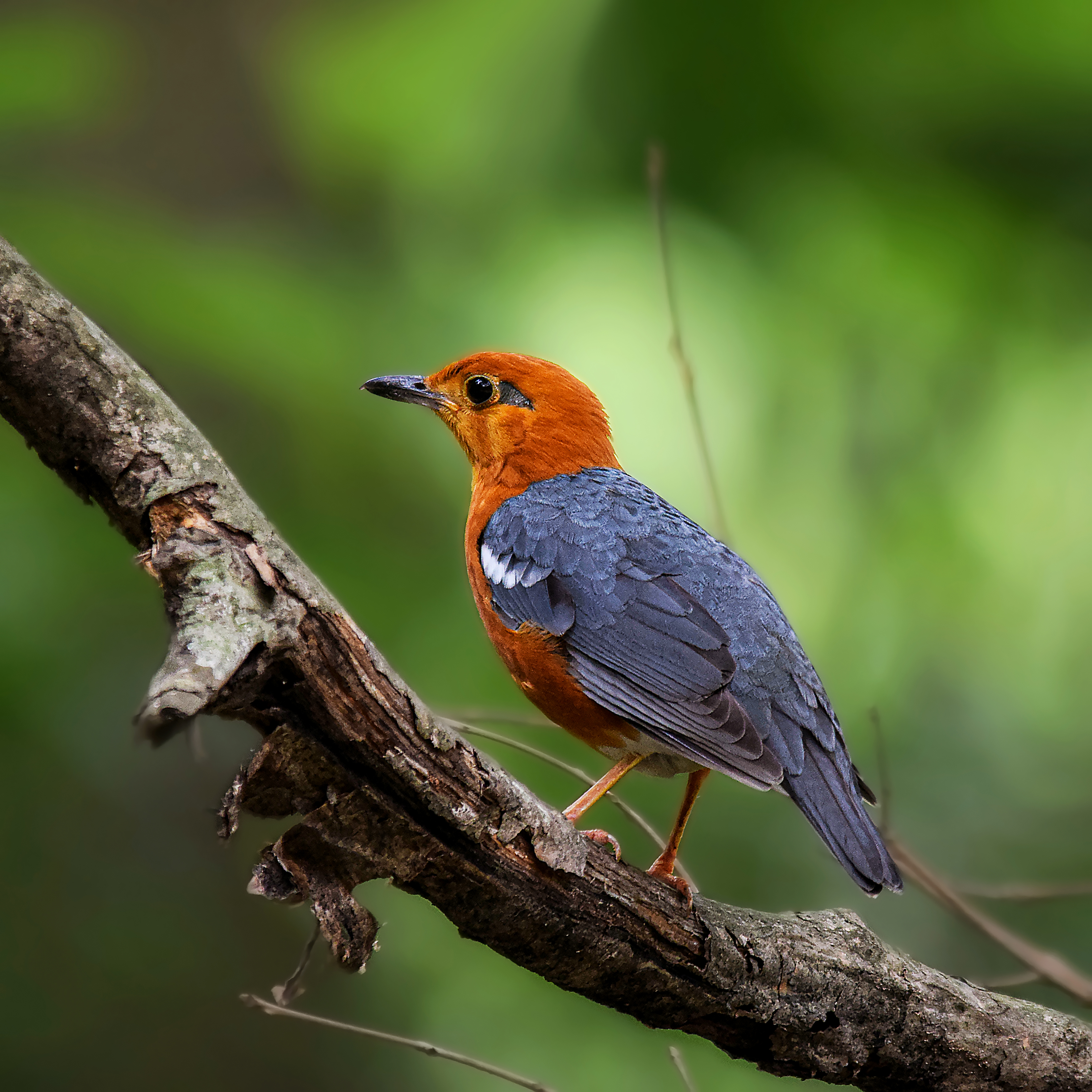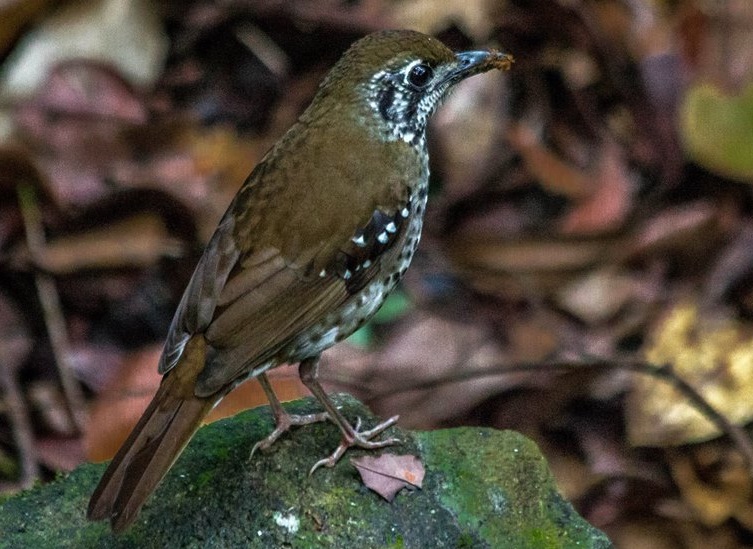|
Geokichla
The ''Geokichla'' thrushes are medium-sized mostly insectivorous or omnivorous birds in the thrush (bird), thrush family, Turdidae. They were traditionally listed in the ''Zoothera'', but molecular phylogenetic studies published in 2008 led to their placement in a separate genus. Taxonomy The genus ''Geokichla'' was introduced in 1836 by the German naturalist Salomon Müller with ''Turdus citrinus'' John Latham (ornithologist), Latham, 1790, the orange-headed thrush, as the type species. The genus name combines the Ancient Greek ''geō-'' meaning "ground-" with ''kikhlē'' meaning "thrush. These species were formerly placed in the genus ''Zoothera''. Molecular phylogenetic analysis by Gary Voelker and collaborators published in 2008 found that ''Zoothera'' was polyphyletic. To create monophyletic genera 21 species were moved from ''Zoothera'' to the resurrected genus ''Geokichla''. List of species The genus contains the following 21 species: * Siberian thrush, ''Geokichla sibiri ... [...More Info...] [...Related Items...] OR: [Wikipedia] [Google] [Baidu] |
Pied Thrush
The pied thrush (''Geokichla wardii'') is a member of the thrush (bird), thrush family found in India and Sri Lanka. The males are conspicuously patterned in black and white while the females are olive brown and speckled. They breed in the central Himalayas, Himalayan forests and winter in the hill forests of southern India and Sri Lanka. Like many other thrushes, they forage on leaf litter below forest undergrowth and fly into trees when disturbed and sit still making them difficult to locate. Description Males of this thrush are conspicuously black and white. Mostly black on the upper parts it has a long white supercilium, and white tips to the wing coverts, tertials, rump and tail. The underparts are white with black flank spots the bill and legs are yellow. Females and young birds have the same basic pattern, but the black is replaced by dark brown, and the white by light brown. The markings on the underside are scalier. The third primary is the longest followed by the four ... [...More Info...] [...Related Items...] OR: [Wikipedia] [Google] [Baidu] |
Orange-headed Thrush
The orange-headed thrush (''Geokichla citrina'') is a bird in the thrush family. It is common in well-wooded areas of the Indian Subcontinent and Southeast Asia. Most populations are resident. The species shows a preference for shady damp areas, and like many ''Geokichla'' and '' Zoothera'' thrushes, can be quite secretive. The orange-headed thrush is omnivorous, eating a wide range of insects, earthworms and fruit. It nests in trees but does not form flocks. The male of this small thrush has uniform grey upperparts, and an orange head and underparts. The females and young birds have browner upper parts. Taxonomy This species was first described by John Latham in 1790 as ''Turdus citrinus'', the species name meaning " citrine" and referencing the colour of the head and underparts. It has about 12 subspecies. Rasmussen and John C. Anderton, Anderton (2005) suggest that this complex may consist of more than one species. *''G. c. citrina'', the nominate subspecies breeds from n ... [...More Info...] [...Related Items...] OR: [Wikipedia] [Google] [Baidu] |
Abyssinian Ground Thrush
The Abyssinian ground thrush (''Geokichla piaggiae'') is a thrush from the family Turdidae which is native to north-east Africa where it lives at high altitude in montane forests. Its binomial nomenclature honors the 19th century Italian explorer of East Africa Carlo Piaggia. Description The Abyssinian ground thrush is an attractive but rather secretive species. The adults are a deep rufous orange on the head and face with a distinct white eye ring, the orange colour becomes les rufous on the breast and flanks and the upperparts are olive brown except for the orange-brown rump and tail. On the folded wing it shows two prominent white wingbars from the tips to the coverts. Immature birds tend to be paler and duller than the adults. They measure in length and weigh . Voice The contact call of the Abyssinian ground thrush is a high pitched "tseep", the song is a typical thrush like melodious series of whistled phrases rendered in Sinclair & Ryan as "chee-cheeleeroo-chruup". Dist ... [...More Info...] [...Related Items...] OR: [Wikipedia] [Google] [Baidu] |
Siberian Thrush
The Siberian thrush (''Geokichla sibirica'') is a member of the thrush family, Turdidae. The genus name ''Geokichla'' comes from Ancient Greek ''geo-'', "ground-" and ''kikhle'', " thrush". The specific ''sibirica'' is Latin for Siberia. It breeds in taiga in Siberia. It is strongly migratory, with most birds moving to southeastern Asia during the winter. It is a very rare vagrant to western Europe. It is very secretive. The Siberian thrush is similar in size to the song thrush. It is omnivorous, eating a wide range of insects, earthworms and berries. The male Siberian thrush is a dark blue-grey above and below, with a white stripe above the eye. The lower belly and flanks are white. The female is a much browner bird, with a buff stripe above the eye. A striking identification feature of both sexes in flight is the black band on the white underwings, a feature shared with the scaly thrush The scaly thrush (''Zoothera dauma'') is a member of the thrush family Turdidae. D ... [...More Info...] [...Related Items...] OR: [Wikipedia] [Google] [Baidu] |
Ashy Thrush
The ashy thrush (''Geokichla cinerea''), also known as the ashy ground-thrush, is a species of bird in the family Turdidae. It is endemic to the Philippines in Luzon and Mindoro. Its natural habitats are tropical moist lowland forests and or tropical moist montane forests. It is threatened by habitat loss, and the illegal wildlife trade. Description and taxonomy EBird describes the bird as "A medium-sized bird of lowland and foothill forest. Forages on the ground. Ashy-gray above with black-and-white bars in the wing and the face. Underparts white, with black spots concentrated in the chest. Similar to White's thrush and Sunda thrush, but smaller, with spots rather than scales below and an obvious black vertical bar through the eye. Song is a simple medium-pitched whistled melody. Also gives harsh grating calls." This species is monotypic. Ecology and behaviour In 2012, these birds were discovered to be present in the La Mesa Ecopark which is close to the heart of Met ... [...More Info...] [...Related Items...] OR: [Wikipedia] [Google] [Baidu] |
Chestnut-backed Thrush
The chestnut-backed thrush (''Geokichla dohertyi'') is a ground thrush (bird), thrush species endemic to Lombok, Timor and the Lesser Sunda Islands in Indonesia. The species is rapidly declining and it is already extinct on Lombok and possibly on Lesser Sunda. A European species, the fieldfare, was once also known by this nam The binomial name of this bird commemorates the American entomologist William Doherty. Captivity There are a number of European institutions that hold this species, including: Berlin Zoological Garden, Birdworld, Bristol Zoo, Royal Burgers' Zoo, Chester Zoo, Edinburgh Zoo, Durrell Wildlife Park, Waddesdon Manor aviary and Zoo Basel. Six of these zoos have successfully bred them since October 2011 and there are now 91 of them in these institutions. Private Members of the Foreign Bird League in the UK are participating in the breeding scheme for this species and are being particularly successful. References Geokichla, chestnut-backed thrush Birds o ... [...More Info...] [...Related Items...] OR: [Wikipedia] [Google] [Baidu] |
Chestnut-capped Thrush
The chestnut-capped thrush (''Geokichla interpres'') lives in forests and woodlands of Southeast Asia. It is a songbird species in the family Turdidae. Traditionally, it has included the Enggano thrush as a subspecies, but a recent review recommended treating them as separate. Consequently, the chestnut-capped thrush is monotypic. The chestnut-capped thrush has a black back and a white belly with black spots. As its common name suggests, it has a chestnut cap. Its face is black with a white mark on the cheeks and another on the lores. The superficially similar chestnut-backed thrush is substantially larger when seen alongside one another, and has a black crown and rufous back, whereas the Enggano thrush has an olive-ochre back and little or no white on the lores and auriculars. The chestnut-capped thrush is very rare in zoos. According to ISIS, Chester Zoo had the only female outside of Asia, until she died in 2007. However, small numbers have been held in private European aviar ... [...More Info...] [...Related Items...] OR: [Wikipedia] [Google] [Baidu] |
Black-eared Ground Thrush
The black-eared ground thrush (''Geokichla camaronensis'') is a species of bird in the family Turdidae. It is found in Cameroon, Democratic Republic of the Congo, Equatorial Guinea, Gabon, and Uganda. Its natural habitats are subtropical or tropical moist lowland forests and subtropical or tropical moist montane forests. The subspecies In Taxonomy (biology), biological classification, subspecies (: subspecies) is a rank below species, used for populations that live in different areas and vary in size, shape, or other physical characteristics (Morphology (biology), morpholog ... ''G. c. kibalensis'' of the Kibale Forest in western Uganda is sometimes regarded as a separate species, the Kibale ground-thrush. References black-eared ground thrush Birds of Central Africa black-eared ground thrush Taxonomy articles created by Polbot {{Turdidae-stub ... [...More Info...] [...Related Items...] OR: [Wikipedia] [Google] [Baidu] |
Spot-winged Thrush
The spot-winged thrush, (''Geokichla spiloptera''), is an Asian thrush, a group within the large thrush family Turdidae. It is an endemic resident breeder in Sri Lanka. Description Adults of this medium-sized thrush, which measures in total length and weighs are light brown above with a double wing bar of white spots. The pale face has two dark bars. The underparts are white with heavy spotting. The bill is black and legs are yellow. The song is a rich and varied whistling. Young birds have buff streaking on the upperparts, and the face and the underparts are light brown with heavy streaking. Ecology & Behavior This uncommon species breeds in hill rainforests, and to a lesser extent in drier woodlands, at altitudes between 500 and 2000 m. The wintering areas are similar but include less well-wooded areas, and are generally at 750 to 1500 m altitude. The spot-winged thrush is generally solitary and can be quite secretive, especially in the dense undergrowth and bamboo clumps ... [...More Info...] [...Related Items...] OR: [Wikipedia] [Google] [Baidu] |
Enggano Thrush
The Enggano thrush (''Geokichla leucolaema'') is a species of bird in the family Turdidae. It is endemic to rainforests on Enggano Island off Sumatra in Indonesia. It has traditionally been considered a subspecies of the chestnut-capped thrush. It is threatened by habitat loss Habitat destruction (also termed habitat loss or habitat reduction) occurs when a natural habitat is no longer able to support its native species. The organisms once living there have either moved elsewhere, or are dead, leading to a decrease .... References Enggano thrush Birds of Enggano Enggano thrush Taxonomy articles created by Polbot Endemic birds of Indonesia {{Turdidae-stub ... [...More Info...] [...Related Items...] OR: [Wikipedia] [Google] [Baidu] |
Slaty-backed Thrush
The slaty-backed thrush (''Geokichla schistacea'') is a passerine bird in the Asian thrush genus. It is found in the Tanimbar Islands The Tanimbar Islands (; ), also called ''Timur Laut'' (literally, "North East"; ), are a group of about 65 islands in the Maluku province of Indonesia. The largest and most central of the islands is Yamdena; others include Selaru to the sout .... References slaty-backed thrush Birds of the Tanimbar Islands Endemic birds of Indonesia slaty-backed thrush {{turdidae-stub ... [...More Info...] [...Related Items...] OR: [Wikipedia] [Google] [Baidu] |



